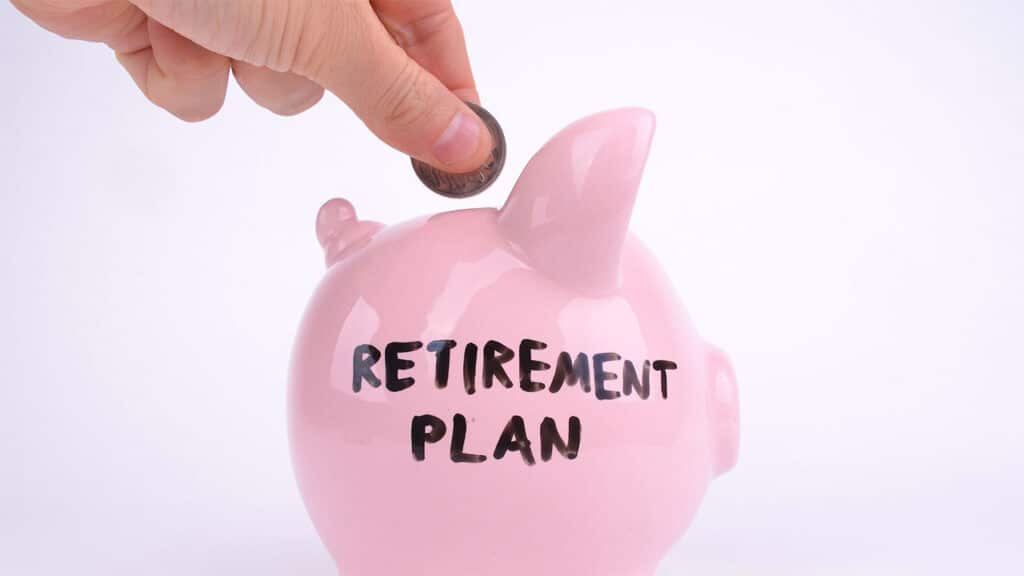Retirement planning is a crucial step for securing your financial future. It’s never too early or too late to start thinking about how you’ll support yourself in your golden years. Having a solid retirement strategy can help you enjoy a comfortable lifestyle and peace of mind when you stop working.
Smart retirement planning involves more than just saving money. It requires careful thought about your goals, lifestyle choices, and potential expenses.
By considering these factors now, you can take steps to build a nest egg that will meet your needs later on. With the right approach, you can feel confident about your retirement prospects and look forward to this exciting new chapter in life.
1. Start Early
Starting your retirement planning early is key. The sooner you begin, the more time your money has to grow. This can make a big difference in the long run.
Putting money aside in your 20s or 30s gives you a big advantage. Even small amounts can add up over time. This is because of compound interest. Your earnings generate their own earnings.
Starting early also means you can take more risks. You have time to recover from market ups and downs. As you get older, you can shift to safer investments.
Don’t worry if you didn’t start in your 20s. It’s never too late to begin. The best time to start is now. Every year counts when it comes to saving for retirement.
Try to save a portion of each paycheck. Even 5% or 10% can make a difference. If your job offers a 401(k) match, take full advantage. It’s free money for your future.
Remember, time is on your side when you start early. It allows you to build a bigger nest egg with less stress. Your future self will thank you for starting now.
2. Diversify Investments
Spreading your money across different types of investments is key for a strong retirement plan. This helps protect your savings from big losses if one investment doesn’t do well.
You can put your money in stocks, bonds, and real estate. Each of these responds differently to market changes. When one goes down, another might go up.
Stocks can give you good returns over time. They represent ownership in companies. Bonds are loans you make to companies or governments. They usually offer steady income.
Real estate can be a good way to grow your money and get regular income. You can invest in properties or real estate funds.
Don’t forget about international investments. They can offer growth opportunities and help balance your portfolio.
As you get closer to retirement, you might want to shift more money into less risky investments. This can help protect what you’ve saved.
Remember to review your mix of investments regularly. Your needs may change over time, and you should adjust your portfolio accordingly.
3. Maximize 401(k) Contributions
Your 401(k) is a powerful tool for retirement savings. To make the most of it, aim to contribute as much as you can.
Start by contributing enough to get your full employer match. This is free money you don’t want to miss out on.
Try to increase your contributions each year. Even small bumps of 1% can add up over time.
If you’re 50 or older, take advantage of catch-up contributions. These allow you to put in extra money above the regular limits.
Consider maxing out your 401(k) if possible. In 2024, you can contribute up to $23,000 if you’re under 50, and $30,500 if you’re 50 or older.
Look into your investment options. Choose a mix of funds that fits your risk tolerance and retirement timeline.
Keep an eye on fees. Lower-cost funds can help your money grow faster over time.
If your employer offers a Roth 401(k), think about splitting your contributions. This can give you tax diversity in retirement.
Don’t forget to review and rebalance your 401(k) regularly. This helps keep your investments on track with your goals.
4. Consider Roth IRA
A Roth IRA can be a smart choice for your retirement savings. It offers unique benefits that set it apart from other retirement accounts.
With a Roth IRA, you pay taxes on the money you put in now. This means you won’t owe taxes when you take the money out later. Your money grows tax-free over time.
You can start taking money out of your Roth IRA without penalties at age 59½. But you need to have had the account for at least five years.
Roth IRAs have income limits. Not everyone can open one. Check if you’re eligible based on how much you earn.
Unlike traditional IRAs, Roth IRAs don’t force you to take money out at a certain age. This gives you more control over your savings.
You can put money into a Roth IRA even if you have a 401(k) at work. This can help you save more for retirement.
Think about converting some of your traditional IRA to a Roth IRA. This can lower your tax bill in retirement. But be careful—you’ll need to pay taxes on the money you convert.
Roth IRAs can be a good fit if you think your tax rate will be higher in retirement. They offer flexibility and tax advantages that can boost your retirement savings.
5. Create a Budget
Making a budget is key for your retirement plan. Start by figuring out how much you’ll spend each month after you stop working. Most people spend less in retirement than they did before.
Think about your basic needs like food, housing, and healthcare. Don’t forget fun stuff too, like travel or hobbies. Write down all these costs.
Next, look at your income sources. This might include Social Security, pensions, or savings. Make sure your income can cover your expenses.
If there’s a gap, you may need to adjust your spending or find ways to boost your income. Maybe you could work part-time or downsize your home.
A good budget helps you avoid using up your savings too fast. It gives you peace of mind about your money situation in retirement.
Remember, your budget isn’t set in stone. You can change it as your needs and wants shift over time. The important thing is to have a plan.
By creating a budget now, you’re taking a big step towards a comfortable retirement. It might take some time, but it’s worth the effort.
6. Pay Off Debt
Getting rid of debt is a key step in retirement planning. You want to enter retirement with as little debt as possible. This gives you more freedom to use your money for things you enjoy.
Start by listing all your debts. This includes credit cards, loans, and mortgages. Look at the interest rates for each one. Focus on paying off high-interest debts first, like credit cards.
Make a plan to pay more than the minimum each month. Even small extra payments can make a big difference over time. You might need to cut back on some expenses to free up money for debt payments.
Consider using the debt snowball method. Pay off your smallest debt first, then move on to the next one. This can help you build momentum and stay motivated.
If you have a lot of debt, think about talking to a financial advisor. They can help you make a plan that fits your situation. They might suggest options like debt consolidation or negotiating with creditors.
Try to pay off all non-mortgage debt before you retire. If you have a mortgage, aim to pay it off as soon as possible. This can greatly reduce your monthly expenses in retirement.
Remember, paying off debt now means more money for your retirement later. It’s an important part of building a secure financial future.
7. Save for Healthcare Costs
Healthcare costs can take a big bite out of your retirement savings. It’s smart to plan ahead for these expenses.
Many people underestimate how much they’ll spend on healthcare after they stop working. Medical bills tend to go up as you get older.
In 2024, a 65-year-old may need $165,000 saved just for healthcare. This amount keeps rising each year.
Medicare helps, but it doesn’t cover everything. You’ll still have to pay for some services, medicines, and supplies.
One way to save is with a Health Savings Account (HSA). If you qualify, you can put money in tax-free and use it later for medical costs.
Another option is to set aside about 15% of your income for future healthcare needs. This can give you a good starting point.
Women may need to save more than men. They often live longer and have higher lifetime medical costs.
Talk to a financial advisor about your specific situation. They can help you make a plan that fits your needs and budget.
Remember, the sooner you start saving, the better prepared you’ll be. Even small amounts can add up over time.
8. Invest in Real Estate
Real estate can be a smart addition to your retirement plan. It offers potential income and growth over time.
You have several options for investing in real estate. Buying rental properties is one way. You can purchase homes or apartments and rent them out. This provides regular income from tenants.
Another choice is real estate investment trusts (REITs). These are companies that own and manage properties. You can buy shares in REITs like stocks. They often pay dividends to investors.
Crowdfunding platforms let you invest in real estate projects with smaller amounts of money. This can be a good way to start if you don’t have a lot to invest.
Fix-and-flip projects involve buying homes, improving them, and selling for a profit. This takes more work but can yield good returns.
Real estate can provide steady cash flow in retirement. It may also offer tax benefits and protection against inflation.
Before investing, research the local market and property values. Consider hiring a property manager if you don’t want to handle tenant issues yourself.
Start small and learn as you go. Diversify your investments to spread risk. Remember that real estate markets can change, so stay informed about trends in your area.
9. Understand Social Security
Social Security can be a key part of your retirement income. It’s a program that provides monthly payments to retirees based on their work history.
You can start getting Social Security at age 62. But waiting until your full retirement age or even up to age 70 can increase your monthly benefit.
Your full retirement age depends on when you were born. For most people today, it’s between 66 and 67 years old.
The amount you get is based on your highest 35 years of earnings. Working longer can boost your earnings if you’re earning more now than in the past.
You can check your estimated benefit amount online. The Social Security Administration has a tool on their website where you can see your personal estimate.
It’s smart to plan for Social Security as part of your retirement strategy. But don’t rely on it as your only source of income. Most retirees need additional savings to live comfortably.
Remember, Social Security benefits may change in the future. Stay informed about any updates to the program that could affect your retirement plans.
10. Set Retirement Goals
Setting clear retirement goals is key to planning your future. Think about what you want your retirement to look like. Do you want to travel? Stay close to family? Start a new hobby?
Figure out how much money you’ll need each year in retirement. A common rule is to aim for 70–90% of your current income. This helps you maintain your lifestyle after you stop working.
Consider your timeline. When do you want to retire? This affects how much you need to save and invest. The earlier you start, the more time your money has to grow.
Be specific with your goals. Instead of “save more,” try “save $500 per month.” This makes it easier to track your progress and stay motivated.
Don’t forget about healthcare costs. These often increase as you age. Include them in your retirement budget to avoid surprises later.
Review and adjust your goals regularly. Life changes, and so should your plans. Update them as needed to stay on track for the retirement you want.
11. Emergency Fund
An emergency fund is a key part of retirement planning. It’s money you set aside for unexpected costs or events.
You should aim to save 3-6 months of living expenses in your emergency fund. This cash can help you avoid dipping into retirement accounts when surprises come up.
Keep your emergency fund in a savings account you can access quickly. Look for an account with a good interest rate to help your money grow.
Start small if you need to. Even saving $25 or $50 per month can add up over time. You can increase this amount as your budget allows.
Review your emergency fund regularly. As your expenses change, you may need to adjust how much you’re saving.
Don’t use your emergency fund for non-emergencies. It’s there to protect you from financial shocks, not for planned expenses or wants.
Remember, money in your emergency fund has already been taxed. This makes it different from retirement accounts, where you may owe taxes on withdrawals.
Having an emergency fund can give you peace of mind in retirement. It helps you handle unexpected costs without disrupting your long-term financial plans.
12. Beneficiary Designations
Naming beneficiaries is a key part of retirement planning. It’s important to choose who will get your assets when you die.
Don’t skip this step. If you don’t name beneficiaries, your assets might go through probate. This can cause delays and extra costs.
Make sure to name beneficiaries for all your accounts. This includes IRAs, 401(k)s, and life insurance policies.
Keep your beneficiary choices up to date. Review them after big life changes like marriage, divorce, or having kids.
Be clear about who gets what. You can name more than one person and decide how much each gets.
Think about naming backup beneficiaries too. This helps if your first choice isn’t around when you die.
Remember that beneficiary choices override what’s in your will. The person you name as the beneficiary will get the asset, no matter what your will says.
Consider tax effects when picking beneficiaries. Some choices might lead to higher taxes for the people who inherit.
If you have young kids, think about setting up a trust. This can help manage the money for them until they’re older.
Get help if you’re not sure what to do. A financial advisor or lawyer can guide you through the process.
13. Estate Planning
Estate planning is a key part of getting ready for retirement. It helps make sure your wishes are followed after you die. You need to decide who gets your things and how to handle your money.
Start by making a list of what you own. This includes your house, cars, bank accounts, and other items. Think about who you want to give these things to.
A will is an important document to create. It spells out how you want your assets divided. You can also name someone to take care of any young children.
Think about setting up a trust. This can help avoid probate and may save on taxes. Talk to a lawyer to see if it’s right for you.
Update your beneficiaries on things like life insurance and retirement accounts. These typically pass outside of a will.
Consider making a living will. This tells doctors what care you want if you can’t speak for yourself. You can also name someone to make health decisions for you.
Review your estate plan every few years. Update it when big life changes happen, like marriages, births, or deaths in the family.
14. Calculate Retirement Needs
Figuring out how much money you need for retirement is key. Start by thinking about your future lifestyle. What do you want to do? Where do you want to live?
Next, estimate your yearly expenses in retirement. Include basics like food, housing, and healthcare. Don’t forget fun stuff like travel or hobbies.
A common rule is to aim for 70-80% of your current income in retirement. But your needs might be different. Some people need more, others less.
Consider how long you might live. People are living longer these days. Plan for at least 20-30 years in retirement.
Don’t forget about inflation. Things will likely cost more in the future. Add 2-3% per year to your estimates.
Use online retirement calculators to help. They can give you a rough idea of how much to save. But remember, they’re just estimates.
Talk to a financial advisor if you need help. They can give you personalized advice based on your situation.
Keep in mind that your needs might change over time. Review your calculations every few years. Update them as your life and goals change.
15. Monitor and Adjust Plans
Retirement plans need regular check-ups. You should look at your plan at least once a year. This helps you stay on track.
Life changes, and so should your plan. Did you get a raise? Maybe you can save more. Did you have a baby? You might need to adjust your goals.
Keep an eye on the economy too. If the market drops, you may need to change your investments. If inflation rises, you might need to save extra.
Don’t forget about new laws. Sometimes the government changes retirement rules. These changes could affect how much you can save or withdraw.
Your health matters too. If you get sick, you may need to retire earlier. Or you might need more money for medical costs.
As you get closer to retirement, think about your timeline. You may want to work longer or retire sooner. Either way, your plan should reflect this.
Remember, a good retirement plan is flexible. It grows and changes with you. By staying alert and making tweaks, you can keep your future on target.
16. Minimize Taxes
Paying less in taxes can help your retirement savings last longer. One way to do this is by using different types of retirement accounts.
Traditional IRAs and 401(k)s let you save money before taxes are taken out. This lowers your taxable income now. You’ll pay taxes when you take the money out later.
Roth IRAs and Roth 401(k)s work differently. You pay taxes on the money you put in, but then it grows tax-free. When you take it out in retirement, you don’t pay any taxes.
It’s smart to have both types of accounts. This gives you choices about where to take money from each year in retirement.
Another tip is to watch your tax brackets. Taking out just enough to stay in a lower bracket can save you money.
Some people move to states with lower taxes when they retire. This can make a big difference in how much you keep.
Giving money to charity directly from your IRA can also lower your taxes. This works if you’re over 70 1/2 years old.
Talking to a tax expert can help you find more ways to save. They can look at your specific situation and give personalized advice.
17. Consider Annuities
Annuities can be a useful tool for retirement planning. They are financial products that provide a steady income stream during your retirement years.
Insurance companies offer annuities. When you buy one, you make payments to the company. In return, they promise to pay you back over time.
There are different types of annuities. Fixed annuities give you a set payment amount. Variable annuities can change based on investment performance.
Annuities can help protect you from running out of money in retirement. They can also shield you from stock market losses.
But annuities have some drawbacks. They can be complex and have high fees. Some limit your access to your money.
Before buying an annuity, think about your needs. Do you want guaranteed income? Are you worried about market risks?
Talk to a financial advisor. They can help you decide if an annuity fits your retirement plan. They can also explain the different options available.
Remember, annuities are just one tool. A mix of income sources often works best for retirement. Consider how an annuity might fit with your other savings and investments.
18. Review Insurance Needs
As you plan for retirement, take a close look at your insurance coverage. Your needs may change as you get older.
Health insurance is crucial. Medicare becomes available at 65, but you might need extra coverage. Look into supplemental plans to fill any gaps.
Life insurance may be less important if your kids are grown. But it could still help your spouse or cover final expenses. Think about whether you need to keep or adjust your policy.
Long-term care insurance is worth considering. It can pay for nursing home care or in-home help if you need it later. The earlier you buy it, the cheaper it usually is.
Don’t forget about property insurance. If you plan to downsize or move, your home and auto insurance needs might change. Review your policies to make sure they still fit.
Disability insurance may not be necessary once you stop working. But if you plan to work part-time in retirement, it could still be useful.
Talk to an insurance expert about your specific situation. They can help you figure out what coverage you need as you enter this new phase of life.
19. Work with a Financial Advisor
A financial advisor can help you plan for retirement. They have special knowledge about money and investing. You might want to talk to one as you get ready for retirement.
Before you pick an advisor, think about what you need. Do you want help with investments? Or do you need a full retirement plan? Knowing this will help you find the right person.
When you meet advisors, ask about their experience. Find out how they work with clients. Make sure you feel comfortable talking to them. You’ll be sharing personal information, so trust is important.
Ask about fees upfront. Some advisors charge a percentage of your investments. Others might charge by the hour or project. Know what you’ll pay before you agree to work together.
Look for advisors who are certified. This means they’ve had special training. Common certifications include CFP (Certified Financial Planner) and ChFC (Chartered Financial Consultant).
A good advisor will look at your whole financial picture. They’ll help you set goals and make a plan to reach them. They can also help you adjust your plan as your life changes.
Remember, the final decisions are always yours. A financial advisor gives advice, but you’re in charge of your money. Pick someone who respects that and works with you as a team.
20. Stay Informed on Market Trends
Keeping up with market trends is key for your retirement planning. You need to know what’s happening in the economy and investment world to make smart choices.
Follow financial news from trusted sources. Read articles, watch videos, or listen to podcasts about retirement and investing. This will help you understand how changes might affect your savings.
Pay attention to interest rates and inflation. These can impact your retirement income and spending power. When rates change, you might need to adjust your investment mix.
Learn about new investment options that could benefit you. The financial world is always changing, so stay curious and open to new ideas.
Talk to a financial advisor regularly. They can explain complex trends and help you apply them to your own situation. Your advisor can also warn you about risky fads to avoid.
Join online forums or local groups for retirees. You can share information and learn from others’ experiences. This can give you practical insights beyond just numbers and charts.
Remember, staying informed doesn’t mean making constant changes. Use what you learn to make thoughtful, long-term decisions for your retirement plan.
Understanding Retirement Accounts
Retirement accounts are tools that help you save money for your future. They offer tax benefits and can grow your savings over time. Let’s look at the main types, their tax advantages, and rules for taking money out.
Types of Retirement Accounts
There are several retirement accounts to choose from:
- 401(k) plans: These are offered by employers. You can put part of your paycheck into the account before taxes.
- Traditional IRAs: Anyone can open these accounts. You might get a tax break when you put money in.
- Roth IRAs: You pay taxes on the money you put in, but not when you take it out later.
- SEP IRAs: These are for self-employed people or small business owners.
- Simple IRAs: Small businesses use these for their workers.
Each type has its own rules about how much you can put in and when you can take money out.
Tax Advantages
Retirement accounts can save you money on taxes. Here’s how:
- Traditional 401(k)s and IRAs: You don’t pay taxes on the money you put in right away. This lowers your taxable income now.
- Roth accounts: You pay taxes on the money you put in, but not when you take it out later. This can be good if you think you’ll be in a higher tax bracket when you retire.
- All types: Your money grows tax-free while it’s in the account. You don’t pay taxes on the earnings each year.
These tax breaks can help your money grow faster over time.
Withdrawal Rules
Each type of account has rules about taking money out:
- 401(k)s and traditional IRAs: You can start taking money out at age 59½ without a penalty. You must start taking money out at age 72.
- Roth IRAs: You can take out your contributions any time. To take out earnings without penalty, you must be 59½ and have had the account for at least 5 years.
- Early withdrawals: If you take money out before age 59½, you might have to pay a 10% penalty plus taxes.
It’s best to leave your money in these accounts until you retire. This gives your savings more time to grow.
Investment Strategies for Retirement
Smart investing can help grow your savings for a comfortable retirement. A good plan includes spreading out your money, picking the right mix of investments, and keeping your portfolio balanced.
Diversification and Risk Management
Putting your money in different types of investments helps protect your savings. This is called diversification. It’s like not putting all your eggs in one basket. You can invest in stocks, bonds, and real estate. Each type of investment has its own risks and rewards.
Stocks can give you high returns but can be risky. Bonds are usually safer but give lower returns. Real estate can provide steady income. By mixing these, you can balance risk and reward.
You can also invest in different industries and countries. This helps protect your money if one area has problems.
Asset Allocation
Asset allocation means deciding how much of your money to put in different types of investments. Your age and when you plan to retire affect this choice.
When you’re younger, you can take more risks. You might put more money in stocks. As you get older, you’ll want to be safer with your money. You might move more into bonds.
A common rule is to subtract your age from 110. The result is the percentage you should have in stocks. For example, if you’re 40, you’d have 70% in stocks and 30% in bonds.
Rebalancing Your Portfolio
Over time, some of your investments may grow faster than others. This can throw off your planned mix of investments. Rebalancing fixes this by selling some investments and buying others.
You should check your portfolio once or twice a year. If your mix of investments has changed a lot, it’s time to rebalance.
For example, if stocks have done well, you might have too much money in them. You’d sell some stocks and buy more bonds to get back to your planned mix.
Rebalancing helps you stick to your plan and manage risk. It can be hard to sell investments that are doing well, but it’s important for long-term success.
Final Thoughts
In conclusion, effective retirement planning is crucial for securing a comfortable and worry-free future.
By starting early, diversifying investments, and maximizing contributions, you can build a strong financial foundation. Regularly reviewing and adjusting your plan ensures it stays aligned with your goals.
With thoughtful planning and proactive steps, you can confidently look forward to a financially secure retirement, allowing you to enjoy the freedom and peace of mind you’ve worked hard to achieve.
Start today, stay committed, and make your retirement years truly rewarding.










































